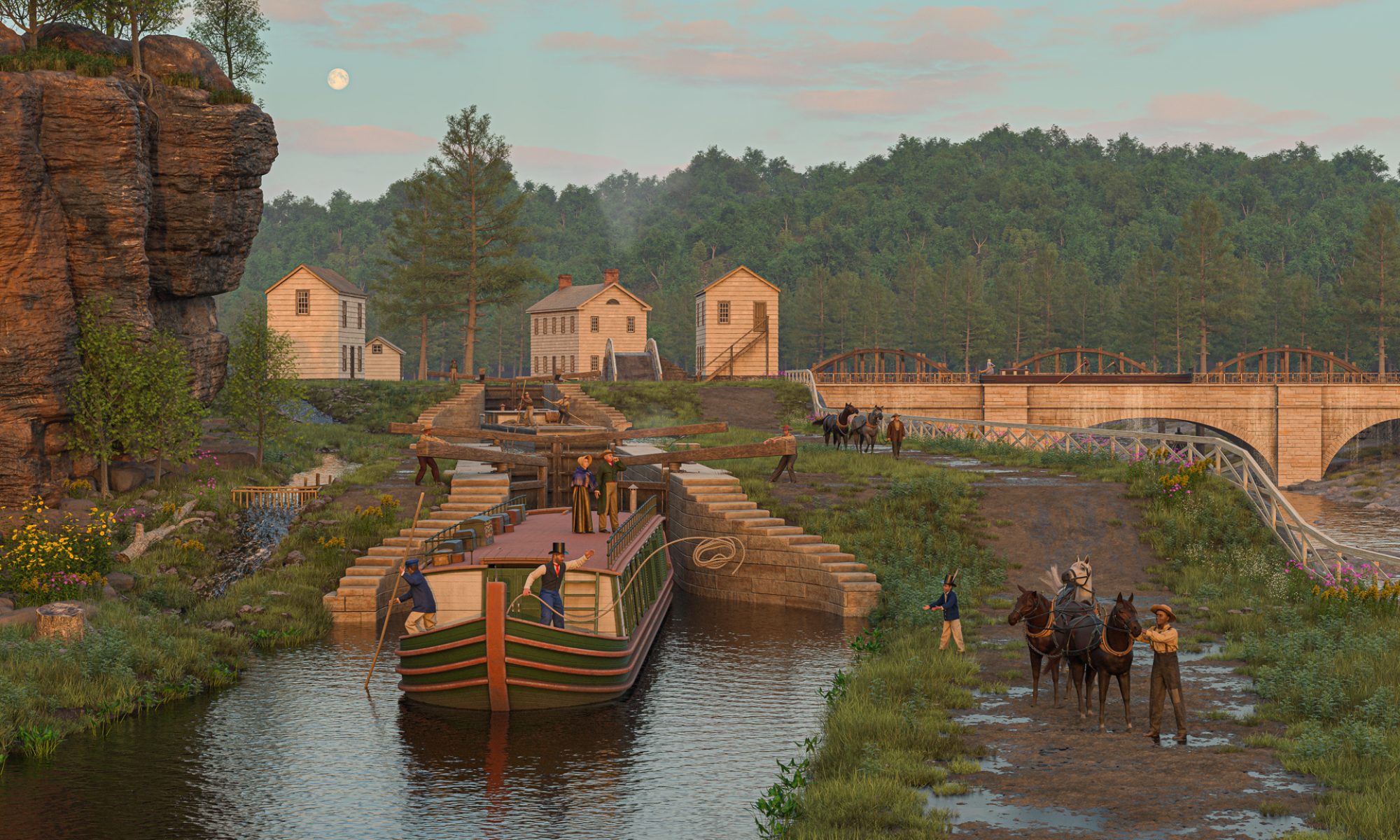
Almost all of the man-made objects and foliage are done, so it’s time to start on the final, most challenging part of the scene. Modeling organic shapes is not something I have a lot of experience at. Time to address that.
First up: The draft animals needed for our two-horsepower farm wagon.

We turn to Silo, my favorite subdivision modeling app and, beginning with a cube, begin roughing in the basic shape.
The reference images are from Dover’s An Atlas of Animal Anatomy for Artists, which includes fine horse drawings, including drawings of the bone and muscle structure, in each of the three dimensions. (The book also includes drawings of other animals.)

A few iterations later we’ve added a head and subdivided the mesh, reshaping the polygons and edges to follow the main muscle groups.

More edges are added and redirected where necessary. Ears, eyes, nostrils, mouth and hooves are finished up. The mesh is then saved out so it can be reopened in Maya, where the mane and tail will be added.

The horse collar is based on historical photographs and also a nice set of images from eBay, where I found a vintage 1900s collar for sale. In the process of modeling it and the rest of the harness I learned some new terminology and a little bit about how everything worked.

As with most things, there’s a lot more to this than meets the eye.

The model is shaded twice to create a pair of draft horses that are moved into position next to the tongue of the farm wagon. The rest of the harness is then modeled to connect all the pieces.

